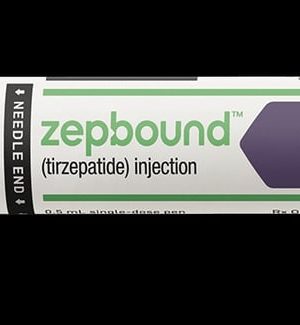- Understanding the Connection Between Anxiety and Depression
- How Daily Prunes Can Influence Cholesterol and Inflammation
- When to Take B12 for Better Absorption and Energy
- Epsom Salts: Health Benefits and Uses
- See What Saffron Can Do for Sleep and Heart Health
- 6 Common Mistakes to Avoid Before Your Physical
- Can Sweating Really Help You Beat a Cold?
- Strengthening Your Relationship: Practical Strategies
- Skip Storing This Everyday Product in the Fridge Door
- Green Tea + B3 Pairing May Boost Brain Health
Mounjaro, Zepbound Cut Odds for Diabetes by 94% in At-Risk People, Study Finds

Tirzepatide, the blockbuster GLP-1 medicine known as Mounjaro for diabetes and Zepbound for weight loss, cut the odds that an obese, prediabetic person will develop diabetes by 94%, a new trial shows.
The three-year-long trial, funded by the drugs’ maker, Eli Lilly, also found “sustained weight loss through the treatment period, with adults on the 15-milligram [mg] dose experiencing a 22.9% average decrease in body weight compared to 2.1% for placebo,” the company said in a news release issued Tuesday.
“These data reinforce the potential clinical benefits of long-term therapy for people living with obesity and prediabetes,” Dr. Jeff Emmick, senior vice president of product development at Lilly, said in the release.
Tirzepatide is a competitor GLP-1 drug to semaglutide, which is made by Novo Nordisk and branded as Ozempic for diabetes and Wegovy for weight loss. Sales of both tirzepatide and semaglutide have boomed in recent years as people flock to the drugs to help lose excess weight.
Tirzapatide and semaglutide work by boosting insulin release, helping to increase feelings of fullness and suppressing appetite.
Both injected drugs were originally designed as treatments for diabetes, however.
In the new trial, 1,032 people who were deemed to be prediabetic and either obese or overweight received a “dummy” placebo injection weekly or an injection of either 5 mg, 10 mg or 15 mg of tirzepatide for 176 weeks (three years).
Participants were deemed to be prediabetic if they had conditions such as heart disease, high blood pressure, high cholesterol and/or sleep apnea.
Participants were also placed on diets and an exercise regimen as they took either tirzepatide or placebo.
Besides the big benefit in preventing the onset of diabetes and the sustained weight loss, participants’ ability to lose weight rose along with the dose of tirzepatide: 15.4% of starting weight lost for those taking the 5 mg dose, 19.9% with 10 mg and 22.9% with the 15 mg dose.
Some weight did tend to come back once participants stopped tirzepatide, however.
According to Lilly, during the 17 weeks after ceasing treatment, “those who had discontinued from tirzepatide began to regain weight and had some increase in the progression to type 2 diabetes, resulting in an 88% reduction … in the risk of progression to type 2 diabetes compared to placebo.”
What about side effects? “The most frequently reported adverse events were typically gastrointestinal-related and generally mild to moderate in severity,” according to the company. Gastrointestinal complaints included diarrhea, nausea, constipation and vomiting.
More information
Find out more about GLP-1 medications at the Cleveland Clinic.
SOURCE: Eli Lilly, news release, Aug. 20, 2024
Source: HealthDay
Copyright © 2026 HealthDay. All rights reserved.










